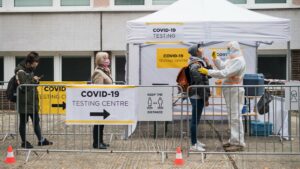Biometrics Mandatory Coming Into Force
Citizenship and Immigration Canada (CIC) Announcements October 17, 2013: Biometrics Mandatory Coming Into Force The collection of biometric information has become mandatory for the nationals
Citizenship and Immigration Canada (CIC) Announcements October 17, 2013: Biometrics Mandatory Coming Into Force The collection of biometric information has become mandatory for the nationals
Operational Bulletin 520-A – September 03, 2013 Biometric Information Collection from Temporary Residence (TR) Applicants Outside Canada Summary This Operational Bulletin (OB) provides operational information

Managing your finances is hard enough – now imagine having to do it in a new country. Before you come to Canada, or if you’ve recently arrived, you might need help figuring out where to start. That’s where we come in. Here are five financial tips for new Canadians.

Discover how Immigration, Refugees and Citizenship Canada’s 2023 Settlement Outcomes Report navigated the challenges of the COVID-19 pandemic to successfully integrate newcomers. Explore insights into the impact on settlement services, client volumes, and outcomes amidst evolving immigration levels and recent arrivals.

Discover the latest extension of Canada’s Temporary Public Policy (TPP) aiding family members fleeing conflict in Sudan. Learn about fee exemptions, study and work permits, and Canadian immigration provisions amidst the ongoing humanitarian crisis. Stay informed with IRCC updates and navigate the complexities of Sudanese refugee applications in Canada.

Stay informed on proposed changes to Canada’s Immigration and Refugee Protection Act impacting asylum claimants. Discover how Ottawa’s 2024 budget may lead to easier deportations. Learn more about the implications for migrants’ rights and the evolving landscape of immigration in Canada.

Explore the contentious debate surrounding Canada’s proposed immigration detention policy changes, as human rights groups challenge Ottawa’s plan to detain immigrants in federal penitentiaries. Learn about concerns over vulnerable individuals facing harsh conditions, flight risk assessments, and the implications for basic Canadian values. Delve into the voices advocating for reform and the call for alternatives to indefinite detention in this insightful article.

Virgin Plus has you covered with affordable phone and internet plans, keeping you connected with people worldwide. Stay close to your loved ones, no matter where you are!